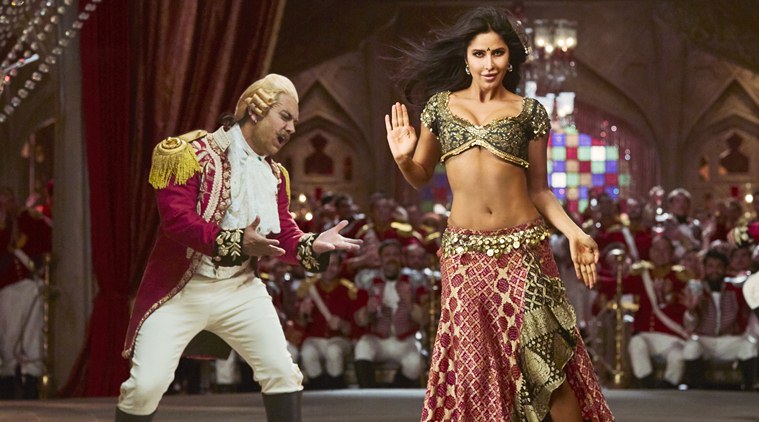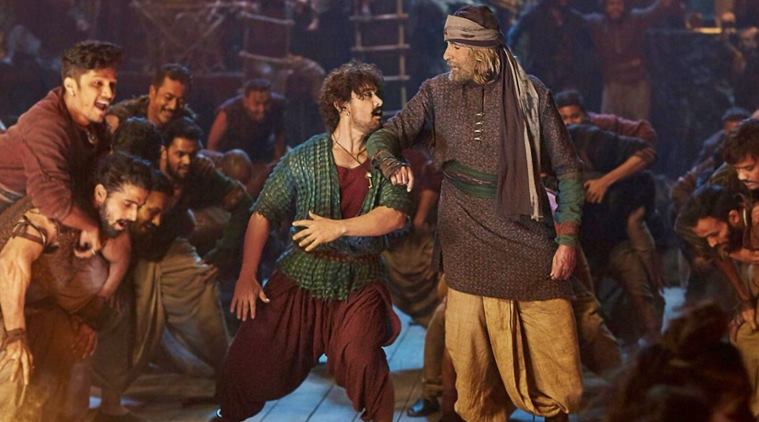The Adventure Kicks Off
Costume and production designers of Thugs of Hindostan on what went into envisioning the world in which the film is set.
Written by Shivangi Vaswani | Updated: November 8, 2018 3:22:46 pm

Thugs of Hindostan: The film brings together two distinct worlds, the real and the fantastical.
It takes thorough research and lots of imagination to bring alive a world from over two centuries ago. For production designer Sumit Basu and costume designers Rushi Sharma and Manoshi Nath, imagining the world of Vijay Krishna Acharya’s Thugs of Hindostan was a big challenge. The upcoming fantasy-adventure film is set in the late 1700s, a tumultuous period, when the Mughal empire was splintering and the East India Company was consolidating its power, setting the stage for the rise of British Raj.
Photographs from the period being unavailable, the designers had to rely on paintings made at the time. “Visual arts can be a great inspiration for creating a world in the film. The British came very constructively, they brought their painters along. One such artist was Edwin Lord Weeks, who created many paintings of India in the 1800’s,” says Basu.
Thugs of Hindostan tells the story of a group of bandits determined to stay free of British rule and much of the action unfolds on two massive ships, featuring sword fights, battles with bows and arrows, as well as grand dance sequences. This meant intensive research by the costume and production departments. “We wanted the audience of 2018 to appreciate the aesthetics of those times. To do so, we had to keep it very authentic,” says Sharma who, along with Nath, spent considerable time at the Victoria and Albert Museum in London. “They gave us the details on even the little buttons, the lapel, collars, the sleeve and the embroideries on the British military uniforms,” she says.
Set mainly in Awadh and along the coast of Gujarat, many scenes take place in the forests and caves uninhabited by humans. “To visualise such a setting, one has to be the architect of that era,” says Basu. The production design started with concept art of the locations. Props such as coins, knives, cannons and paper were recreated by imitating the designs and material of the 1800s.
The film brings together two distinct worlds, the real and the fantastical. “This is where we have taken our creative liberties. For the thugs, we have stuck to the silhouettes of the period but tweaked the costumes in a way that reflect the quirks of the characters,” says Rushi. For instance, Firangi, played by Aamir Khan, wears an English tailcoat over his dhoti, hinting at a deceitful nature. Fabrics like cotton, silk and linen have been used to make the costumes seem authentic, although the designers have also created their own fabrics. “Leather is very stiff. To be able to drape it around Zafira, played by Fatima Sana Shaikh, we had to blend it with another fabric. As for footwear, we gave them jutis, sandals or boots. But underneath the straps and laces, there was a hidden sports shoe to facilitate the actors in action sequences,” she adds.
The biggest challenge, says Basu, was to create two life-sized ships, the “heroes of the film”. They were designed in Mumbai for over a year, with another year spent constructing them in Malta, which is also where the scenes on the ship were shot. “We weren’t only building ships but making a set, with enough space for the light and camera department, for the actors to run around,” he says.
Basu, who has previously worked on Rockstar, Guzaarish and Kaabil, believes a production designer’s work is to tell the story not written in the script. He says, “Very few films allow you to create a world of your own, to create an iconic image that the audience will remember.”























 A still from the film Thugs of Hindostan.
A still from the film Thugs of Hindostan.
No hay comentarios:
Publicar un comentario